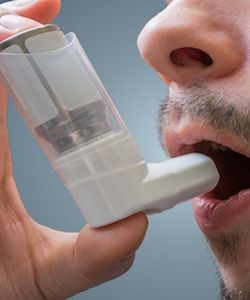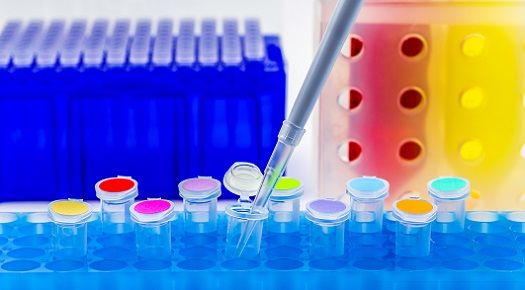Article
Testosterone Shown to Impact Lung Function, Could Influence Asthma Care
Author(s):
Both sex- and age-specific therapies could come to clinical asthma field in upcoming years.
, characterized by its difficult-to-control symptoms most commonly treated with inhaled corticosteroids, could see more patient-tailored therapy in coming years. A recent study shows hormones play a significant role in reducing lung inflammation, opening the door to sex- and age-specific treatments for asthma.
Investigators, led by Nicola Heller, PhD, associate professor in the Department of Anesthesiology and Critical Care Medicine at John Hopkins University School of Medicine, sought to test a hypothesis born from a previous study that showed estrogen was an activator of immune cells that caused lung inflammation.
Asthma symptoms begin with an abnormal Th2 inflammatory immune response that increases inflammation, mucus production, airway constriction, and inflammatory immune cell enlistment in the lungs. One of those immune cells, Alveolar macrophages (AM), is also the most plentiful in the lungs. When an immune reaction occurs, AM are the first to take up arms in what seems to be a bodily invader.
From there, a domino effect occurs. The Th2 inflammation polarizes AM into a M2 phenotype that multiply, then secrete chemokines and cytokines. Those inflammatory molecules recruit eosinophils, which increase airway responsiveness and mucus production.
Because previous studies have shown that asthma affects more boys than girls before puberty and more women than men post-puberty, Heller and her colleagues theorized from their study of estrogen’s positive impact on lung inflammation, that testosterone would discourage lung inflammation.
For this study, investigators used castrated male mice that were implanted with dihydrotestosterone (DHT) pellets that released 1.42 nanograms per ml (normal levels for noncastrated mice are 1.51 nanograms per ml).
To induce an allergic response, the mice were injected with ovalbumin (the main protein in egg whites). While initial results revealed a lower inflammation response overall, the AM had greater M2 polarization.
To figure out what drove the polarization, a mouse was genetically engineered to have no androgen receptors in its macrophages so that they could not respond to hormone signaling. This mouse lineage (male and female) was used to repeat the experiment, exposing them to ovalbumin to coax lung inflammation. A decrease in chemokines, interleukin-5, eosinophil recruitment, and lung inflammation occurred in the male mice, but not the female mice.
“We need to take a much more expansive approach to thinking about how biological differences, such as sex and age, affect symptoms and severity in patients with asthma,” said Heller. “This means that a ‘one size fits all’ approach to asthma management does not work for all patients. A more personalized approach to treatment, that also accounts for the sex of the patient and circulating amounts of sex hormones, may be more successful and effective.”
But research isn’t even close to testing hormone therapies for asthma in humans. Heller says that they need to identify the molecular signaling pathways that lead to augmentation of the M2 macrophage response with testosterone exposure in an allergic setting. Then, those same pathways need to be activated in a mouse model of asthma, experimenting with hormone manipulation to see if it alters the allergic response in the lungs, and making sure there were no lasting reproductive issues with the mice. Next steps after that would be tests in non-human primates, then if all goes well, human trials.
But in the meantime, Heller says that physicians should be aware of how hormonal changes can increase disease severity in asthma patients.
“Recent studies have suggested that imbalances in different hormonal systems pre and post-puberty are hallmarks of allergic disease,” she said. “So, understanding that the stage of life an asthmatic patient is in affects asthma symptoms due to rising and falling estrogen or testosterone could prompt a physician to assess the circulating amounts of sex hormones and non-sex hormones and decide whether to intervene.”
The study, “Androgen and Androgen Receptor as Enhancers of M2 Macrophage Polarization in Allergic Lung Inflammation," was published in the Journal of Immunology.





